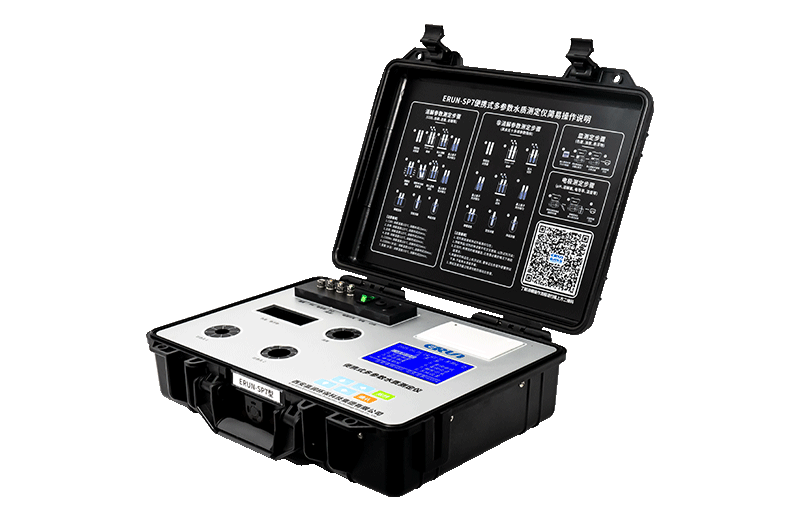Chlorine is one of the most widely used disinfectants in public water systems. It plays a critical role in killing harmful pathogens, preventing waterborne diseases, and ensuring that treated water remains safe during distribution. However, a growing number of consumers and industry professionals are raising concerns about excess chlorine in drinking water—particularly when exposure occurs over many years.
While regulatory agencies provide guidelines for safe chlorine levels, the long-term effects of over-chlorinated water remain an important topic. From potential skin and respiratory irritation to the formation of harmful disinfection byproducts, the risks deserve attention. With increasing awareness of water quality and safety, monitoring chlorine and chloride ion levels has become not just advisable but essential. This article explores the consequences of elevated chlorine levels, how to identify them, and how precision tools like the ERUN-SP7-C4 Portable Chloride Ion Tester can help ensure safer water for homes and industries.
Municipal water facilities intentionally add chlorine to ensure microbial safety. However, several factors can lead to unexpectedly high chlorine levels:
Some systems use higher amounts of chlorine to compensate for older infrastructure or high contamination risk.
As water travels through extended distribution networks, chlorine levels can fluctuate. Areas closer to treatment plants may experience stronger chlorine smells and tastes.
Hot weather accelerates chlorine evaporation and microbial growth, prompting higher dosing during the summer.
Facilities that reuse or store water may unintentionally allow chlorine levels to accumulate.
Understanding why excess chlorine occurs is the first step toward controlling its effects.
Although chlorine is generally considered safe at regulated levels, long-term or repeated exposure to excessive chlorine can have notable consequences.
Chlorine reacts with water to produce compounds that can irritate the eyes, throat, and lungs. Showering in overly chlorinated water may release vapors that worsen asthma or respiratory sensitivity.
Chlorinated water strips natural oils from the skin and hair. Prolonged exposure may lead to:
Dry, itchy skin
Worsened eczema or dermatitis
Brittle or coarse hair
Children and individuals with sensitive skin are especially vulnerable.
Some people report stomach irritation when consuming water with a strong chlorine odor or taste. Though research is ongoing, disruptions in gut microbiota are also being studied.
When chlorine interacts with organic matter in water, it forms compounds such as:
Trihalomethanes (THMs)
Haloacetic acids (HAAs)
Long-term exposure to elevated DBPs has been associated with potential risks that have led many consumers to seek ways to minimize chlorine concentrations at the point of use.

Regulatory agencies worldwide have set clear guidelines to ensure safe consumption.
The World Health Organization (WHO) recommends chlorine levels below 5 mg/L.
The U.S. Environmental Protection Agency (EPA) sets the maximum residual disinfectant level at 4 mg/L.
These limits aim to balance effective disinfection with minimal health risk. However, even water that meets regulatory standards may cause discomfort or sensitivity over time, depending on personal tolerance.
If you want to link this section to authoritative resources, good options include:
WHO Guidelines for Drinking-Water Quality
EPA National Primary Drinking Water Regulations
Both provide official standards and safety guidance.
A strong swimming-pool smell
Bitter or chemical-like taste
Unusual dryness after washing
Metallic or chemical odor during hot showers
While these observations are helpful, they cannot replace objective measurement.
DPD colorimetric tests
Reliable for free chlorine levels, commonly used in municipal diagnostics.
ISE (Ion Selective Electrode) Method
Used to measure chloride ions with high precision.
Portable chlorine and chloride ion testers
Ideal for real-time monitoring and rapid quality control.
Chloride ions reflect long-term chlorine interactions within water systems, pipelines, and industrial processes. Monitoring chloride levels is essential for:
Assessing water stability
Evaluating long-term corrosion risks
Understanding how chlorine behaves after prolonged contact
This is where high-precision equipment becomes essential.
The ERUN-SP7-C4 Portable Chloride Ion Tester offers a powerful solution for accurate on-site monitoring of chloride ion concentration—an essential indicator of long-term chlorine exposure.
Chloride levels help detect:
Water treatment inconsistencies
Pipeline deterioration
Accumulated chlorine reactions
Environmental changes in natural water sources
This data is vital for municipal water plants, food and beverage companies, aquaculture, healthcare facilities, and more.

High-precision measurements for dependable water quality analysis
Suitable for municipal water, industrial water, wastewater, and drinking water systems
Works across multiple sectors, including pharmaceuticals, biotechnology, petrochemicals, environmental monitoring, thermal power, printing and dyeing, and fermentation
Portable, rugged design enables fast on-site assessments
Reduces the need for expensive laboratory testing
Routine testing with the ERUN-SP7-C4 allows organizations to:
Identify abnormalities before they become safety hazards
Maintain compliance with international standards
Ensure consumer and employee safety
Improve long-term operational stability
For businesses prioritizing water safety, this instrument offers reliable, science-backed protection.
Excess chlorine in drinking water can cause skin irritation, unpleasant taste, and potential long-term risks if left unchecked. While chlorine remains essential for public health, precise monitoring is the key to maintaining safety and comfort. Tools like the ERUN-SP7-C4 Portable Chloride Ion Tester empower households and industries to take control of their water quality with confidence. Through consistent measurement and proactive management, cleaner, safer water becomes achievable for everyone.